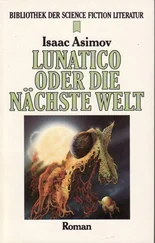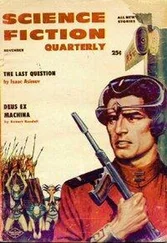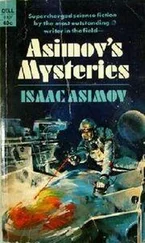Isaac Asimov - Asimov’s Guide To Shakespear. Volume 1
Здесь есть возможность читать онлайн «Isaac Asimov - Asimov’s Guide To Shakespear. Volume 1» весь текст электронной книги совершенно бесплатно (целиком полную версию без сокращений). В некоторых случаях можно слушать аудио, скачать через торрент в формате fb2 и присутствует краткое содержание. Жанр: Культурология, на английском языке. Описание произведения, (предисловие) а так же отзывы посетителей доступны на портале библиотеки ЛибКат.
- Название:Asimov’s Guide To Shakespear. Volume 1
- Автор:
- Жанр:
- Год:неизвестен
- ISBN:нет данных
- Рейтинг книги:4 / 5. Голосов: 1
-
Избранное:Добавить в избранное
- Отзывы:
-
Ваша оценка:
- 80
- 1
- 2
- 3
- 4
- 5
Asimov’s Guide To Shakespear. Volume 1: краткое содержание, описание и аннотация
Предлагаем к чтению аннотацию, описание, краткое содержание или предисловие (зависит от того, что написал сам автор книги «Asimov’s Guide To Shakespear. Volume 1»). Если вы не нашли необходимую информацию о книге — напишите в комментариях, мы постараемся отыскать её.
Asimov’s Guide To Shakespear. Volume 1 — читать онлайн бесплатно полную книгу (весь текст) целиком
Ниже представлен текст книги, разбитый по страницам. Система сохранения места последней прочитанной страницы, позволяет с удобством читать онлайн бесплатно книгу «Asimov’s Guide To Shakespear. Volume 1», без необходимости каждый раз заново искать на чём Вы остановились. Поставьте закладку, и сможете в любой момент перейти на страницу, на которой закончили чтение.
Интервал:
Закладка:
Nor is this the only complication unraveled. Oberon meets Titania, who, in her entranced adoration of the ass-headed Bottom, freely gives up her Indian boy. She then has Bottom sleep with his long-eared head in her lap, and Oberon finally takes pity on her. He releases her from her spell and orders Puck to remove the ass's head from Bottom and send him back to Athens too.
And so at last are Oberon and Titania reconciled.
… with Hercules and Cadmus…
Now that the complications of the subplots are solved, Theseus and Hippolyta come on the scene again. They are following the hunt and Hippolyta says, in reminiscence:
/ was with Hercules and Cadmus once,
When in a wood of Crete they bayed the bear
With hounds of Sparta.
—Act IV, scene i, lines 115-17
The world of orthodox Greek myth comes swimming back. Hercules was indeed a contemporary of Theseus and the two are made companions in several myths.
Cadmus, in the legends, was a Phoenician prince. He had come to Greece in search of Europa, his sister. She had been kidnapped by Zeus in the shape of a bull and brought to Crete, where Minos was to reign and the Minotaur was to be found. As a matter of fact, Minos was the son of Europa.
Cadmus never found Europa (so that it isn't quite right to place him in Crete). Wandering in Greece itself, he founded the city of Thebes. The Greek legend has it that it was Cadmus who taught the letters of the alphabet to the Greeks. This is interesting since the alphabet did, in actual fact, originate with the Phoenicians and it is entirely appropriate that the Greeks be taught it by Cadmus, a Phoenician prince.
Sparta is mentioned in this passage too. In Theseus' time it was a city in southern Greece that was not particularly remarkable, though it was soon to become the home of Helen, whose beauty sparked the Trojan War. In later centuries Sparta was to become the most militarized and, for a time, the most militarily successful of the Greek cities.
… Thessalian bulls
Theseus says that his own hounds are of the same breed as the "hounds of Sparta" Hippolyta has mentioned:
… their heads are hung
With ears that sweep away the morning dew;
Crook-kneed, and dew-lapped like Thessalian bulls;
—Act IV, scene i, lines 123-25
Thessaly is a fertile plain region in northeastern Greece, much different from the rocky, mountainous area to the south where Greece's most famous cities, including Athens, Sparta, Thebes, and Corinth, were located. It would be naturally a place where horses would be useful and where cattle would be profitably bred. A Thessalian bull would be larger and better than a bull bred elsewhere in Greece.
The rite of May
In the wood, the hunting party, which includes Egeus, the father of Hermia, comes upon the four young people, still sleeping where Puck had left them.
Egeus frowns and begins to ponder on the meaning, but Theseus, depicted throughout the play as courtly and kind, quickly places a harmless interpretation on the matter. He says:
No doubt they rose up early to observe
The rite of May;
—Act IV, scene i, lines 135-36
May Day, the first of May, was a day of nature celebration in ancient times. Spring was definitely established by then; the greenery was growing; it was warm enough to spend the evening outdoors. It was a time for revelry and youth, and no doubt a time when the fertility of nature might best be imitated by the celebrants.
The Maypole about which the young people danced may well be what was left of a phallic symbol. Indeed, earlier in the play, Hermia had made use of just such an implication, perhaps. When she was terribly irritated at being scorned for her shortness, she turned on Helena and said,
How low am I, thou painted maypole? Speak!
—Act III, scene ii, line 296
Not only does Hermia in this way refer disparagingly to Helena as tall and skinny (and perhaps with as little figure as a maypole), but she also implies that the men, Lysander and Demetrius, are dancing about her with immoral intent.
Theseus' reference places the play well before Midsummer Day, by the way.
… Saint Valentine …
Perhaps Theseus is not unaware of the coarser ways of celebrating May Day, for as the hunting horns sound and the Athenian lovers rouse themselves, Theseus says, with light mockery:
Good morrow, friends. Saint Valentine is past:
Begin these wood birds but to couple now?
—Act IV, scene i, lines 142-43
St. Valentine's Day is certainly past, for, as we all know, it falls on February 14. Valentine's Day commemorates the martyred death of St. Valentine on February 14, 270 (which makes it a terribly anachronistic comment in the mouth of Theseus)., The romantic symbolism of the day antedated the good saint. There is a folk belief that the birds began to mate on this day (which is what Theseus is referring to) and this may have initiated fertility rites in pagan days. The Church would attempt to transfer the rites to a Christian commemoration and soften them too, and the story arose that St. Valentine made anonymous gifts of money to help poor girls to a dowry that would find them husbands. Thus, he became the patron saint of romantic love.
The ferocious Egeus, hearing Lysander confess he had intended to elope with Hermia, calls for his death and the marriage of Hermia to Demetrius. Demetrius, however, confesses that he now loves Helena. Theseus, listening politely, decides that each loving pair is now to be married, Lysander to Hermia, and Demetrius to Helena.
Meanwhile Bottom also rouses himself, finds his natural head restored, dismisses his vague memories as a dream, and returns to Athens and to his mourning comrades. They are delighted to meet him and continue to prepare their play.
"The battle with the Centaurs…"
The time of the wedding of Theseus and Hippolyta is now at hand. Theseus has heard of the events of the magic night in the woods and dismisses them as fantasy. He turns to the list of entertainments proposed for the wedding feast and reads off the first item:
"The battle with the Centaurs, to be sung
By an Athenian eunuch to the harp."
We'll none of that. That have I told my love,
In glory of my kinsman Hercules.
—Act V, scene i, lines 44-47
Centaurs were common monsters of Greek myths, composite creatures with the head and torso of men affixed to the body of a horse. They were supposed to have been natives of Thessaly. Perhaps the notion originated with the first sight of men riding horses. The southern Greeks, in their narrow valleys, having been unused to horses for generations, would find men on horseback in the plains of Thessaly when they marched northward in battle and tales of centaurs would drift back to stay-at-homes.
The centaurs were considered to be barbaric creatures of the senses, given to gross eating, to drunkenness and lechery. The chief tale in which centaurs are prominent involves the marriage of Pirithous, a friend of Theseus (he does not appear in this play but he has a minor role in The Two Noble Kinsmen, see page I-56).
Pirithous, who was of the Thessalian tribe of the Lapiths, invited his kinsmen and friends to the wedding, Theseus among them. He also invited a party of centaurs. The centaurs, however, drank too much and, in a drunken fury, created a disturbance and tried to carry off the bride. At once a fight broke out and the Lapiths, with Theseus' stanch help, drove off the centaurs, killing many.
It could not be this tale that was to be sung by the eunuch, for Hercules is not involved and Theseus refers to a battle with centaurs that redounded to Hercules' honor. But then, Hercules had several encounters with centaurs and won every battle.
Читать дальшеИнтервал:
Закладка:
Похожие книги на «Asimov’s Guide To Shakespear. Volume 1»
Представляем Вашему вниманию похожие книги на «Asimov’s Guide To Shakespear. Volume 1» списком для выбора. Мы отобрали схожую по названию и смыслу литературу в надежде предоставить читателям больше вариантов отыскать новые, интересные, ещё непрочитанные произведения.
Обсуждение, отзывы о книге «Asimov’s Guide To Shakespear. Volume 1» и просто собственные мнения читателей. Оставьте ваши комментарии, напишите, что Вы думаете о произведении, его смысле или главных героях. Укажите что конкретно понравилось, а что нет, и почему Вы так считаете.







